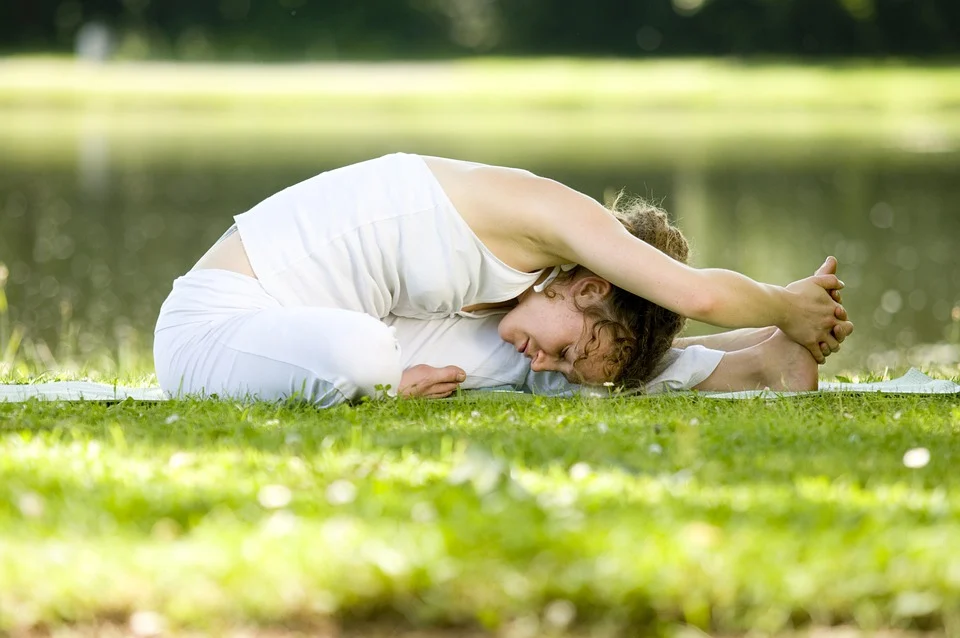Pain during periods is common. Even though the majority of women have been dealing with it since their teens, it does not get any simpler with time.
Cramping and pain last one to two days per cycle for over half of the people who get their period.
Menstrual cramps typically occur either immediately before or after you start your period. For most, they resemble back or lower abdominal pain or cramping in muscles.
However, in addition to cramps, other symptoms like bloating, diarrhea, nausea, headaches, or fatigue are frequently experienced.
If you are among the many people who experience painful periods monthly, you probably have your coping mechanisms and techniques.
Sleep, hydration, wholesome food, and exercise can all be beneficial. Additionally, easy home remedies like taking a warm bath or using a heating pad can provide some relief.
Over-the-counter (OTC) medications can be helpful if those remedies are insufficient. They can stop period pains from getting worse and provide quick relief in the moment.
What Causes Menstrual Cramping?

Uterine contractions are the source of period cramps. Your body’s hormone levels, especially those of prostaglandins, fluctuate as they increase every month and cause these contractions—your uterus contracts during your menstrual cycle, shedding its lining and releasing blood through your vagina.
Period pain usually worsens on the first day of your menstrual cycle because that is when your prostaglandin level is at its peak.
Prostaglandin levels drop; pain usually lessens as your period progresses and the uterine lining sheds [ref].
The reasons why some women experience pain during their period while others do not are still unknown to medical professionals. However, the following factors may be involved:
- Extreme menstrual flow
- Being younger than twenty years old or having just begun menstruation.
- Having your first child
- Producing too much prostaglandins (a substance that affects the womb).
Other factors include:
- Endometriosis (Abnormal uterine tissue growth)
- Growths in your uterus
- Using birth control
| Read: |
OTC Medications to Treat Period Pain
Painkillers available over-the-counter (OTC) are a helpful tool for managing and avoiding painful periods without a prescription or visiting a doctor.
If other methods have not worked, you can take one immediately. Or, you can start taking over-the-counter pain medication before your period.
Preventing cramps from becoming too severe in the first place may be possible if you start taking painkillers one to two days before the onset of your period.
Additionally, until day two or three of bleeding, the American College of Obstetricians and Gynecologists (ACOG) advises taking these.
1. Ibuprofen (Advil, Motrin)
Ibuprofen (Advil, Motrin) is an NSAID that can relieve cramp-related pain. The body produces prostaglandins, which NSAIDs aid in preventing from happening. As a result, they focus on the root of the cramping.
Two pills (400 mg total) taken orally every six hours is the standard dosage of ibuprofen for menstrual cramps. Take no more than 1,200 mg of ibuprofen over-the-counter per day.
2. Acetaminophen (Tylenol)
Acetaminophen (Tylenol) is also a pain reliever, but it is not an NSAID. It blocks chemicals in the brain that cause pain.
Research suggests that NSAIDs may work better than acetaminophen for menstrual cramps. However, acetaminophen is still an effective pain reliever for many people. You can take it with an NSAID, too, if needed.
A typical dose of acetaminophen is 2 tablets (650 mg) by mouth every 4 to 6 hours, as needed. For more severe pain, you can take up to 2 tablets (1,000 mg) every 6 hours, as required.
Generally, most adults and children ages 12 and older shouldn’t take more than 4,000 mg daily.
3. Naproxen (Aleve)
Naproxen (Aleve) is another NSAID used to treat cramps. It works similarly to ibuprofen by targeting the source of the pain.
You can take one tablet (220 mg) orally every eight to twelve hours, as needed, to relieve menstrual cramps. Take no more than 3 over-the-counter naproxen tablets (660 mg) in a day.
Apart from OTC Medications, home remedies to treat menstrual cramps may be helpful too.
Here are 7 home remedies to treat menstrual cramps:

1. Keep hydrated
Water plays a vital role in maintaining proper digestion and skin clarity, so staying hydrated is essential. This applies to painful periods as well.
Menstrual cramps alone are not painful; bloating exacerbates the pain, which is a commonly acknowledged fact regarding period pain. To fight these intense symptoms, you need to drink more water to stay hydrated.
Drinking enough water will help you feel less bloated and ease the pain of your menstrual cramps.
Furthermore, You should avoid eating foods that dehydrate you and drink more water to maintain your hydration level.
2. Heat therapy
A hot water bottle or a heating pad placed against the abdomen can help to relax the muscles and relieve cramps.
Heat relieves tension in the uterine muscle and surrounding tissue, potentially reducing cramping and pain.
You might also choose to apply a heating pad to your lower back to relieve back pain.
Another choice is to take a warm bath, which can aid in reducing muscle tension in the back, legs, and abdomen.
According to a study published in the Journal of Pediatric and Adolescent Gynecology [ref], women who used a heat patch on their lower abdomen reported lower levels of pain even eight hours later than those who chose to self-medicate with over-the-counter analgesics.
3. Drink herbal teas.
Some herbal tea varieties contain antispasmodic substances that lessen the uterine muscle spasms that cause cramps, as well as anti-inflammatory qualities that can lessen bloating and inflammation.
Bloating can be relieved by consuming teas made with cinnamon, lemon, dandelion, and hibiscus.
Menstrual cramps can be eased by oolong tea, raspberry leaf, chamomile, and thyme.
Furthermore, green tea, peppermint, and ginger can aid with both. In addition, these herbal teas may help with insomnia and relieve stress.
4. Reduce menstrual cramps by eating anti-inflammatory foods
Inflammation is one factor contributing to how painful your menstrual cramps are. Painful period cramps are caused by inflammation. One possible reason for your cramps getting worse at times is acute inflammation.
Your cramps may become less intense if you combat this inflammation. There are various ways to combat inflammation during your menstrual cycle, but one effective strategy is to eat well.
Here, foods may be your best bet for reducing inflammation and tackling the pain of the menstrual cycle. Eat foods that reduce inflammation to help relax your uterus and increase blood flow.
Certain delicious foods can provide natural cramp relief. These include:
- Berries,
- Tomatoes,
- Pineapple, and
- Spices like garlic, ginger, or turmeric are good foods to try.
Nuts like walnuts, almonds, leafy greens, and fatty fish like salmon can help lower inflammation.
Omega-3 fatty acids are thought to help with inflammation and pain generally, and period cramps may be no exception.
5. Massages with essential oils

Massaging certain essential oils over your abdomen can also lessen period cramps. Although you can use a simple oil, combining oils will work better to ease period pain. Several essential oils that are frequently used to treat menstrual pain include:
- Sage
- Rose
- Lavender
- Cinnamon
- Marjoram
- Clove
Before beginning the massage, ensure your chosen oil blend is combined with a carrier oil, such as coconut or jojoba oil.
Using more potent oils on your skin and spreading them over a broader area is safe when you use carrier oils.
Make sure you perform a patch test on a small area of your body to ensure no allergic reactions.
Once your oil mixture is ready, take a small amount in your palms and gently massage it in a circular motion over your stomach to relieve the pain of menstrual cramps.
Purchase pure, high-quality oils that have undergone testing. Before applying pure essential oils to your skin, the National Association for Holistic Aromatherapy advises diluting them in an unscented cream, lotion, or carrier oil to prevent irritation.
6. Exercise and try yoga

Low-to medium-intensity aerobic exercise has been shown in studies to help lessen the pain associated with menstrual cramps.
Period cramps significantly decreased for women who exercised 30 minutes a week, at least thrice a week, for eight weeks.
Walking or biking to work, taking a quick walk during your lunch break to increase your daily step count, dancing with friends or family, or beginning a weekend sport are all simple ways to fit some aerobic activity into your hectic schedule.
Yoga is another type of exercise suggested as a treatment for menstrual pain. For 12 weeks, a single 60-minute yoga session can significantly alleviate menstrual cramps.
To find the best yoga class for relieving period cramps, look for one incorporating physical and relaxation elements.
7. Acupressure
One non-invasive method for treating menstrual cramps is acupressure. This procedure involves applying firm pressure to various body parts with your fingers, which may help relieve several symptoms.
Period cramps can be less severe and last longer when acupressure is applied. The following are some methods for treating menstrual pain:
- Rub small circles around your calf, just above your ankle.
- Measure your inner ankle bone four fingertips up.
- Rub this area firmly for several minutes, as well as the surrounding area.
- Do this every day, before or during your period, as needed.
| Read: |
Other Lifestyle Changes to Reduce Period Pains:
You can attempt changing your lifestyle in addition to using these remedies to help relieve the symptoms of period pain. These include [ref]:
- Your period pain may go away if you quit smoking or smoke less. Smoking worsens menstrual pain by decreasing the amount of oxygen that reaches the pelvis.
- Mineral water or pure fruit juices can help you cut back on the amount of sugary beverages you consume.
- Consume a lot of veggies and salads, as well as foods high in fiber.
- Including vitamin E supplements in your diet regularly can help relieve menstrual pain.
- Reducing your intake of sugary foods like chocolate, cakes, and biscuits can ease your menstrual discomfort.
- Make sure you eat lean red meat when you do. Try eating more fish and chicken as well.
- You can lessen your intake of salt because it can prevent water retention.
- Consume a supplement like vitamin B6, evening primrose, or starflower oil that contains gamma-linolenic acids. They support the preservation of the hormonal balance.
- Avoid excessive intake of caffeine or caffeine-containing beverages and foods, as they construct your uterus and make cramps extremely painful.
Summarizing Menstrual Cramps Home Remedies:
Even though menstrual cramps are extremely common, they occasionally might make daily living difficult. Fortunately, you can take action to lessen the discomfort and agony these annoying cramps cause.
As inflammation is a significant indicator of excruciating cramps, you can modify your diet and lifestyle to reduce inflammation. Alternatively, you can take over-the-counter medications to relieve severe pain.
Nonetheless, make sure to consult your doctor again if the pain does not subside within a few days or if it becomes so bad that it interferes with your ability to function.
Go Organic | Try Dibesity’s Premium Catalogue



